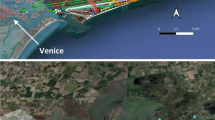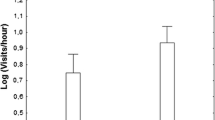Abstract.
We examined how reproductive state affected shifts in behavior of adult female Podarcis sicula toward chemical cues from a natural snake predator (Coronella austriaca). The oviparous P. sicula lizards do not experience a major physical burden during reproduction, but gravid females substantially increase duration of basking. Therefore, gravid lizards are likely to experience a greater risk of mortality because they are exposed to predators for longer periods. Both gravid and non-gravid females shifted patterns of locomotion when confronted with snake chemical cues, but the change was notably larger when females were non-gravid. When non-gravid, lizards responded to predator scent by increasing the number of stand-ups and starts, while such a response was not observed when females were gravid. By contrast, gravid lizards clearly reduced the time spent basking in the presence of predator scent, whereas no change in basking behavior was observed when females were non-gravid. Thus, females exhibit differential behavioral responses to predator scents that is dependent on reproductive state.
Similar content being viewed by others
Author information
Authors and Affiliations
Additional information
Electronic Publication
Rights and permissions
About this article
Cite this article
Downes, S.J., Bauwens, D. Does reproductive state affect a lizard's behavior toward predator chemical cues?. Behav Ecol Sociobiol 52, 444–450 (2002). https://doi.org/10.1007/s00265-002-0538-3
Received:
Revised:
Accepted:
Issue Date:
DOI: https://doi.org/10.1007/s00265-002-0538-3




